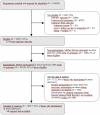Maternal psychosocial stress during pregnancy and placenta weight: evidence from a national cohort study
- PMID: 21217829
- PMCID: PMC3013108
- DOI: 10.1371/journal.pone.0014478
Maternal psychosocial stress during pregnancy and placenta weight: evidence from a national cohort study
Abstract
Background: To study in a large-scale cohort with prospective data the associations between psychosocial stress during pregnancy and placenta weight at birth. Animal data suggest that the placenta is involved in stress-related fetal programming.
Methodology/principal findings: We defined a priori two types of psychosocial stress during pregnancy, life stress (perceived burdens in major areas of life) and emotional symptoms (e.g. anxiety). We estimated the associations of maternal stress during pregnancy with placenta weight at birth, controlled for length of gestation, by predicting gestational age- and sex-specific z-scores of placenta weight through multiple regression analysis, adjusted for potential confounders (N = 78,017 singleton pregnancies). Life stress (per increase in stress score by 1, range: 0-18) during pregnancy was associated with increased placenta weight at birth (z-score, reported in 10(-3); B, 14.33; CI, 10.12-18.54). In contrast, emotional symptoms during pregnancy were not associated with placenta weight at birth.
Conclusions/significance: Maternal life stress but not emotional symptoms during pregnancy was associated with increased placenta weight at birth; yet, the association-estimate was rather small. Our results may contribute to a better understanding of the role of the placenta in the regulation of intrauterine processes in response to maternal stress.
Conflict of interest statement
References
-
- Naeye RL. Do placental weights have clinical significance? Hum Pathol. 1987;18:387–391. - PubMed
-
- Jansson T, Powell TL. Role of the placenta in fetal programming: underlying mechanisms and potential interventional approaches. Clin Sci (Lond) 2007;113:1–13. - PubMed
-
- Fowden AL, Forhead AJ, Coan PM, Burton GJ. The placenta and intrauterine programming. J Neuroendocrinol. 2008;20:439–450. - PubMed
Publication types
MeSH terms
LinkOut - more resources
Full Text Sources


